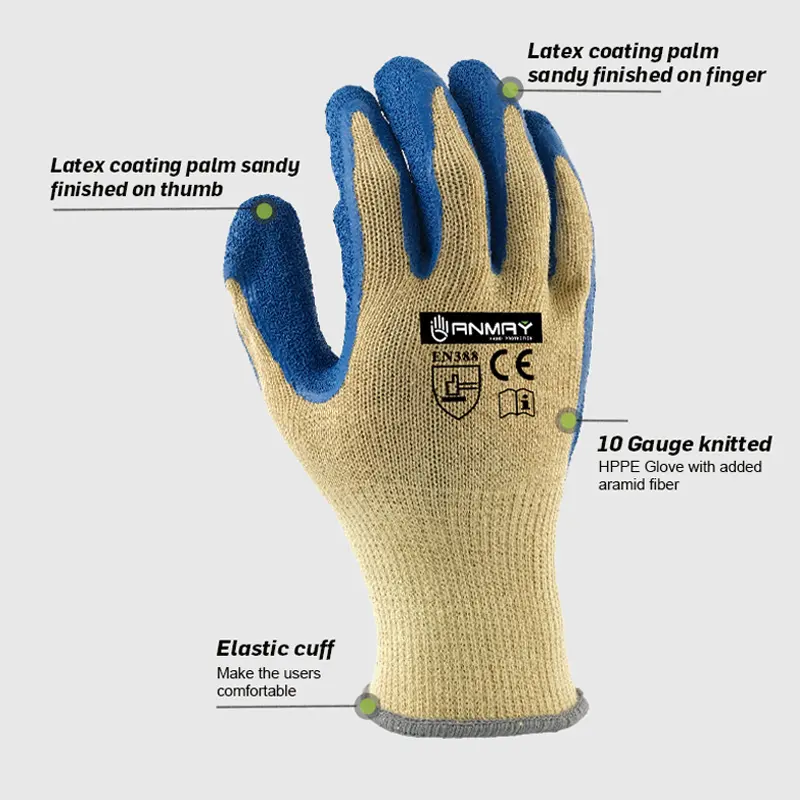
Kevlar is a game-changer in safety equipment, especially gloves. Striking the perfect balance between durability and flexibility, it is a trusted material for various industries. But why does Kevlar stand out?
Kevlar is a synthetic fiber known for its high tensile strength, flexibility, and resistance to heat, making it an ideal material for safety gloves in hazardous environments.
Kevlar gloves are everywhere—from construction sites to industrial plants—but how exactly does this material protect workers, and what else should we know about it? Let’s dive deeper.
Why is Kevlar used for gloves?
Kevlar is a material designed for safety and performance. In gloves, it offers critical protection in demanding environments. But what makes it so unique?
Kevlar is used for gloves because it provides superior cut resistance, heat resistance, and lightweight comfort, which are crucial in high-risk industries.
Dive Deeper: What makes Kevlar gloves so effective?
Kevlar fibers are five times stronger than steel by weight. This allows gloves to resist sharp objects, punctures, and extreme heat while staying lightweight. Here’s a breakdown of its benefits:
| Feature | Benefits for Gloves |
|---|---|
| Cut Resistance | Protects from sharp tools and edges |
| Heat Resistance | Prevents burns during high-temperature work |
| Lightweight | Comfortable for long hours of use |
Industries like construction, glass manufacturing, and metalworking rely on Kevlar gloves to reduce workplace injuries. The material also retains flexibility, allowing precise movements—a critical advantage when working with tools or handling small parts.
When should Kevlar gloves be used?
Choosing the right gloves depends on the nature of the job. So, when are Kevlar gloves most suitable?
Kevlar gloves should be used in tasks involving sharp objects, high heat, or risks of puncture, such as glass handling, metal fabrication, or welding.
Practical applications of Kevlar gloves
Kevlar gloves are indispensable in jobs where safety and precision intersect. Some common use cases include:
Glass and Construction Work
Workers in glass industries deal with sharp edges daily. Kevlar gloves prevent deep cuts while ensuring the dexterity needed to handle fragile materials. Similarly, construction workers face hazards like nails or sharp tools, where Kevlar gloves offer reliable cut resistance.
Welding and Heat-Intensive Tasks
In welding, temperatures can exceed 1,000°C. Kevlar’s heat resistance ensures that gloves can withstand these extreme conditions while protecting hands from burns.
Heavy-Duty Industrial Use
In industries like automotive or metal fabrication, Kevlar gloves are ideal for handling sharp sheet metal or heavy-duty tools. The material reduces risks without compromising productivity.
No matter the industry, understanding your specific safety needs is the key to choosing the right gloves.
Does Kevlar contain latex?
This is a common question for users with latex allergies. So, does Kevlar present any risks in this regard?
Kevlar itself does not contain latex. It is a synthetic fiber made from aramid, making it safe for individuals with latex allergies.
The importance of latex-free gloves
For many workers, allergic reactions to latex can lead to serious health issues. Kevlar eliminates this risk by being a non-latex alternative. Here are some key points:
- Material Composition: Kevlar is made from aramid fibers, which are entirely synthetic and hypoallergenic.
- Glove Linings: While Kevlar is latex-free, some gloves might have latex coatings or linings. Always check product specifications if allergies are a concern.
Latex-free Kevlar gloves are a practical solution for sensitive users, ensuring both safety and comfort without the risk of allergic reactions.
Why is Kevlar used in protective clothing?
Kevlar’s applications go beyond gloves. But why is it a go-to material for protective clothing in general?
Kevlar is used in protective clothing because of its exceptional strength, heat resistance, and ability to absorb impacts, providing all-around safety for workers in hazardous conditions.
How does Kevlar enhance worker safety?
Protective clothing often combines Kevlar with other materials for enhanced durability and functionality. Here's why it’s so effective:
Resistance to Abrasion and Cuts
Kevlar is woven into fabrics to create lightweight but tough garments. These are used in industries like construction, where risks of cuts and abrasions are high.
Fire-Resistant Properties
Firefighters rely on Kevlar-based uniforms to shield them from intense heat and flames. The material’s heat resistance ensures reliable protection in life-threatening situations.
Impact Absorption
In heavy industries, Kevlar is used in jackets or overalls to absorb and distribute impacts from falling objects or machinery.
Kevlar’s versatility makes it an essential material not just for gloves, but for helmets, vests, and other safety gear. Its presence in workplaces worldwide has set new standards for safety and efficiency.
Conclusion
Kevlar is a powerful material that transforms safety gear. Its strength, flexibility, and resistance to heat make it an indispensable choice for gloves and protective clothing.
